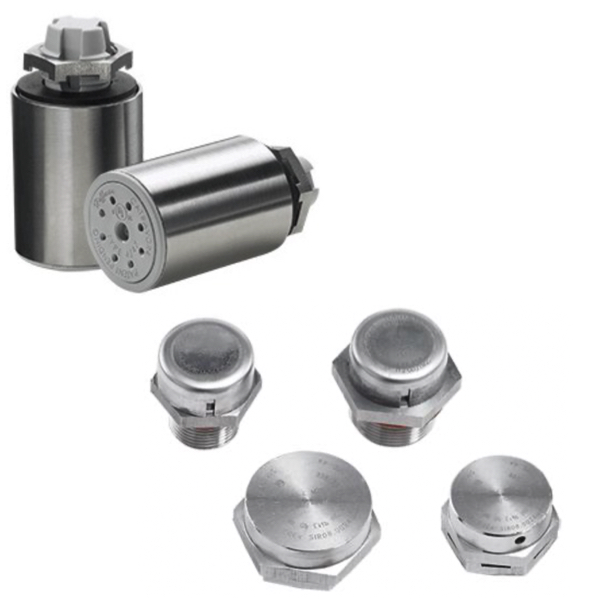Enclosure Drains

Enclosure breather drains and vent drains are critical components for protecting electrical and electronic equipment housed within sealed enclosures. These devices are designed to allow accumulated condensation or moisture to exit the enclosure while maintaining protection against dust, debris, and environmental contaminants. By managing internal moisture, enclosure drains help reduce the risk of corrosion, electrical faults, and long-term damage to sensitive components.
In industrial and hazardous environments, temperature fluctuations can create pressure differentials between the inside and outside of an enclosure. Breather and vent drains often incorporate pressure equalization features that permit controlled airflow, minimizing temperature-induced vacuums. This function reduces the likelihood of moisture being pulled into the enclosure through gaskets, seals, or cable entry points, helping preserve enclosure integrity and system reliability.
Enclosure breather and vent drains are commonly used in outdoor installations, high-humidity environments, and washdown areas where moisture control is essential. Compatible with a wide range of enclosure materials and NEMA ratings, these components support proper enclosure performance without compromising protection standards. RSP Supply offers enclosure drain solutions suitable for demanding industrial applications.
FAQs
Q: What is the purpose of an enclosure breather drain?
An enclosure breather drain allows condensation or moisture to exit the enclosure while enabling airflow to equalize internal and external pressure, helping prevent moisture-related damage.
Q: How do vent drains help prevent moisture buildup?
Vent drains release accumulated water and allow controlled air exchange, which reduces condensation caused by temperature changes inside sealed enclosures.
Q: Why is pressure equalization important in electrical enclosures?
Pressure equalization prevents temperature-induced vacuums that can draw moisture or contaminants into the enclosure, maintaining a stable internal environment.
Q: Are enclosure drains suitable for hazardous or industrial locations?
Yes, many enclosure drains are designed for use in hazardous or industrial environments where moisture control and enclosure integrity are critical for safety and performance.
Q: Can enclosure breather and vent drains be installed on existing enclosures?
Many enclosure drains are designed for retrofit installation, allowing them to be added to compatible enclosures without significant modifications.
Why Buy Enclosure Breather & Vent Drains from RSP Supply
RSP Supply offers a dependable selection of enclosure breather drains and vent drains from established manufacturers, including Hoffman and Rittal. Our enclosure drain solutions support effective moisture control, pressure balancing, and long-term enclosure protection across a wide range of industrial environments. Customers rely on RSP Supply for consistent product availability, technical expertise, and industrial components that help maintain enclosure performance and operational safety.

